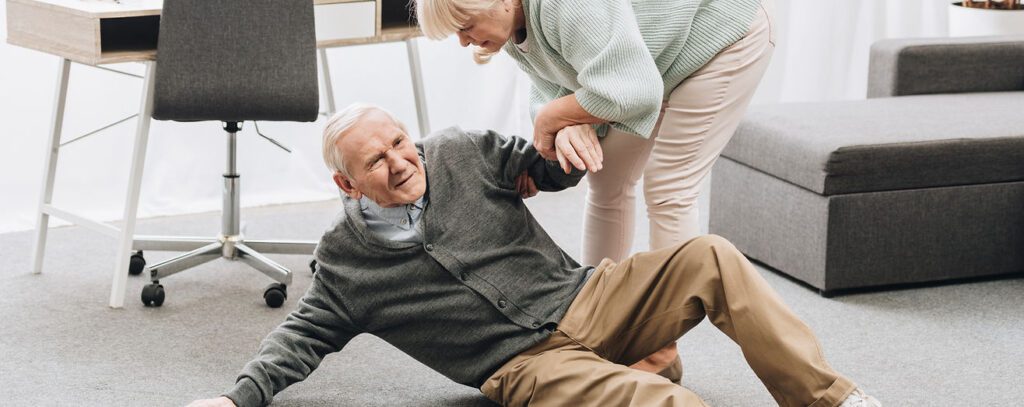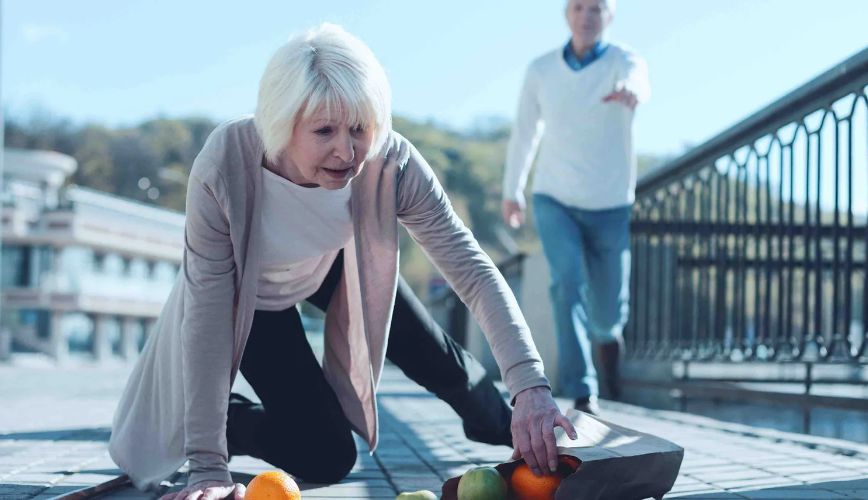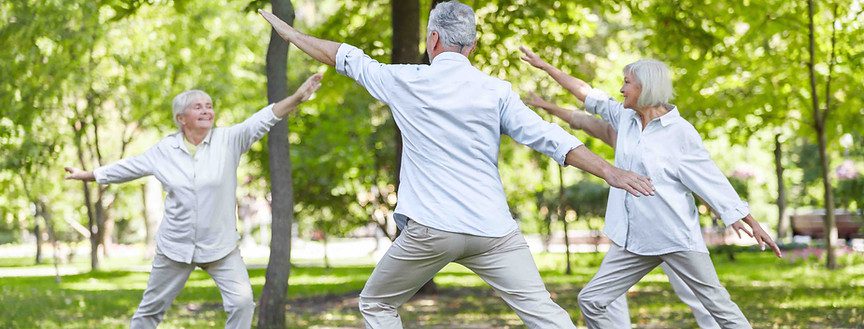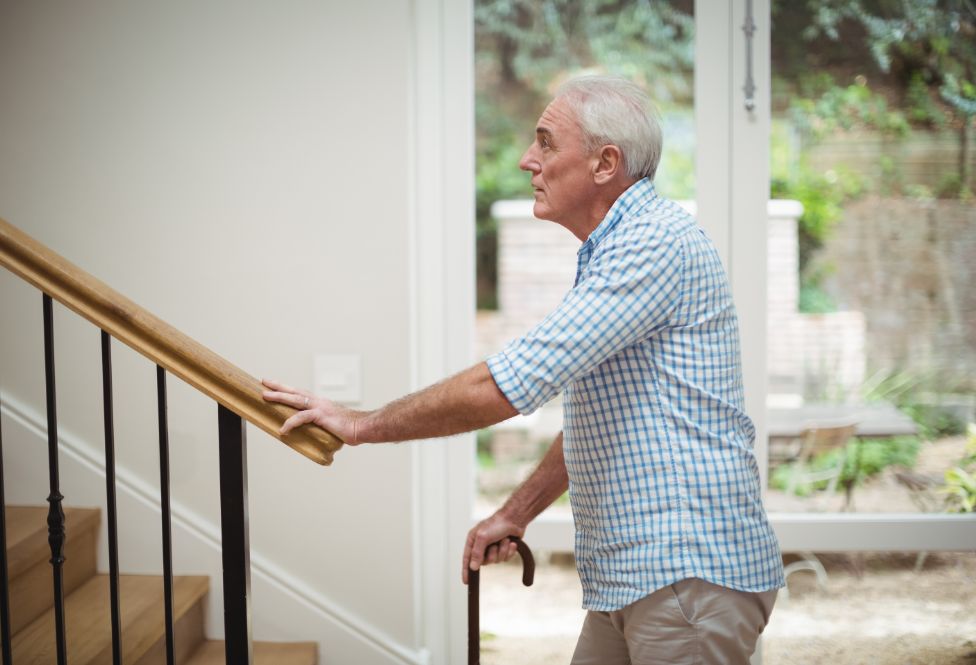Trips and Falls

Those aged over 65 are the most likely group to experience trips and falls. A third of adults aged over 65 and half those aged over 80 experience a fall at least once a year.
Trips and Falls are more likely to cause a serious injury the older you are, or if you have conditions such as Osteoperosis, which means your bones are more likely to break if you trip and fall.
How can we avoid falls?

Trips and Falls often occur due to balance issues or weaknesses. As we get older our muscles generally become weaker and as a result our balance becomes poorer.
This makes uneven ground more challenging often resulting in trips and falls. As we become weaker we can’t lift our legs as high, so we trip on objects, such as a pavement curb or uneven pavement slabs.
One way to improve this is to improve the strength of our muscles. For some time Sports Scientists have been researching strength training in older adults. One thing that is becoming increasingly clear, is that strength training, is essential to maintain mobility as we age. The body can certainly adapt to exercise at any age, though it does take a little longer as you get into your 70s.
Balance can be trained easily through classes such as Thai Chi, Body Balance or simple home based exercises. and is very effective in helping to avoid trips and falls.
Should I use a stick?

You, the doctor, or the family, in an act of good intent, decide a stick will give more security. They often advise its use to help with Trips and Falls. Here a new problem can emerge, however, using a stick changes our balance senses, as we are now walking with three points of contact, rather than two.
This works until the stick is abandoned, possibly just for a few seconds to open a door or step over a threshold. At this point there is now an increasing likelihood that a loss of balance, and a fall will occur.
When used for support, a stick tends to be used in front of the body, rather than to the side. This leads to a forward lean, which over time can become fixed stoop. This stoop, moves the centre of gravity forward of our centre of mass, which significantly increases the likelihood of tripping or loss of balance.
That same forward lean also compresses the ribs together, giving rise to a multitude of issues related to a limited ability to breathe deeply. One of which is the increased likelihood of recurring chest infections. The direct result of this includes reduced fitness, which means you are likely to walk less, which in turn lowers the strength capabilities in your legs. Reduced leg strength is an important factor in making trips and falls more likely. It can be very easy to become stuck in this cycle without being aware that this is happening, or assuming it is due to other causes.
However, don’t abandon your stick at this point. Not without seeking to address, understand and correct the issues that led to using a stick in the first place. If you are used to a stick, you will have reset your movement and balance pattern to stick use. A careful weaning off a stick is necessary, whilst addressing the background causes.
We can help with this if you would like to stop using your stick. We can gently retrain your centre of balance using simple at home exercises, until you don’t need the stick any more.
What exercises can I do to help with trips and falls?

Here are some exercises that can improve balance and help avoid Trips and Falls.
Exercise 1 – Walk very, very slowly. Walking slowly as an exercise in a safe space where you can’t fall is extremely effective. In everyday walking we only load the feet for a couple of seconds, which requires minimal balance and strength. However, by slowing down, we load our feet for longer and this has the effect of both strengthening them and improving balance.
Exercise 2 – Do a slow walk with and without shoes. The slow walk also works on the proprioceptors in the feet. These are the the nerves and muscles that allow our brain to work out where our body is in relation to our feet. Doing this with shoes, means we develop the proprioception we will use when walking outside. Doing it without shoes, means we work the proprioception we will use when we first get out of bed, but don’t have slippers on yet.
Exercise 3 – Tai Chi. One of the main elements of Tia Chi is slow, controlled movement. Just as highlighted in Point 2, this helps both strength and proprioception. However, with Tia Chi, the movements are wide and varied, so it works strength and balance in unfamiliar positions.
Having strength and balance in lots of positions, other than walking and standing straight, means less chance of losing our balance and falling if we find ourselves in an unfamiliar position.
Thai Chi classes are great, but they don’t suit everybody. Your mobility may not allow you to get out of the house or stay on your feet for long enough.
Don’t worry, There are plenty of home videos for Thai Chi and even seated Thai Chi options. Here at The Reinge Clinic we can adapt Tai Chi specifically to your situation. Due to our bio-mechanical knowledge we can adapt exercises to give you an individual home programme, that matches your needs.
Observe how you walk

Exercise 4 – Observe your own walking and ask yourself:
- Do you drag your feet? This may be due to lack of energy or strength.
- Do you scuff your feet? This is often associated with reduced ability to lift your legs easily.
- Do you take very short steps? This can be lack of strength whilst loading the supporting leg or a lack of balance.
- Do your feet point forward, outwards or do they point in slightly different directions? This is often related to the actual strength of your feet and their ability to support themselves. If your feet point anything other than forward it can be a real trip hazard.
All of the above are of course completely correctable with simple, but correctly targeted, Physiotherapy and Exercise interventions.
Frequently Asked Questions about injuries caused by Trips and Falls
Uneven floors cause a huge number of falls, especially on pavements. This is often due to the uneven paving slabs, but often it is also because of strength limitations in our legs. This means we don’t lift our feet as high and this makes it easier to trip.
That is why we always work on strength when trying to rectify recurring falls.
Take a look at the NHS website here, for more information on falls.
Absolutely! You don’t need a GP referral to come and see us. Just give us a call and we can discus your individual situation prior to booking.
Ian, our Physiotherapist, initially worked in elderly care when he worked in the NHS. This gave him plenty of experience working with older clients. He also pained invaluable experience working with people with balance issues, such as those with Multiple Sclerosis, Parkinsons or a history of Stroke.
Gina has an MSc in Exercise and Health Sciences. This involved training in in many conditions that effect balance and understanding the correct exercise protocols to help with this.
Depending where you are located, and on your individual circumstances, we are able provide home visiting where no other option is available.
If you require a home visit, please do give us a call and we can discus your individual situation, to see whether we can help.
Learn more about Trips and Falls
The Conditions We Treat
What Our Clients Say About Us?
Francis Butt
September 20, 2022
As always, brilliant evaluation, treatment and strategy. Thanks Ian!
Claire Kelley
October 10, 2022
Ian is brilliant at really working to solve the problem. He doesn't rush to get you back but gives you time for set exercises to work and then reassess. Would definitely recommend
Sarah Gray
October 17, 2022
Always excellent. Strength returning and feel much stronger as a result.
Helen Littlewood
October 19, 2022
Totally looked after by Ian - really reassured that he can help and support me in my goals Thank you
Zoe Statters
October 20, 2022
Always upbeat, friendly, offers useful advice & service is always top notch, suggestions and treatments that actually work!
Hilary Hardwick
November 4, 2022
My first appointment with Ian and very impressed, I may finally get somewhere with my dodgy hip
Matt Morrisey
December 8, 2022
EXCELLENT , HELPED ME UNDERSTAND ALL MY ISSUES AND HOW TO START TO RE AJUST

Vicki John
September 5, 2023
I came to see Ian on recommendation of my husband after being in a lot of pain with my feet and also having a numb little toe and having had no luck with a number of other people. He diagnosed me with having a trapped nerve in my hip causing the numb toe, he worked on it for a just couple of minutes and it improved! He then gave me ‘homework’ exercises to do and after three visits I was back to normal. I still can’t believe that it wasn’t picked up on by anybody, Ian was the first person to look beyond my foot to find the problem. As for my painful feet which turned out to be Plantar Fasciitis, he worked wonders on those too.